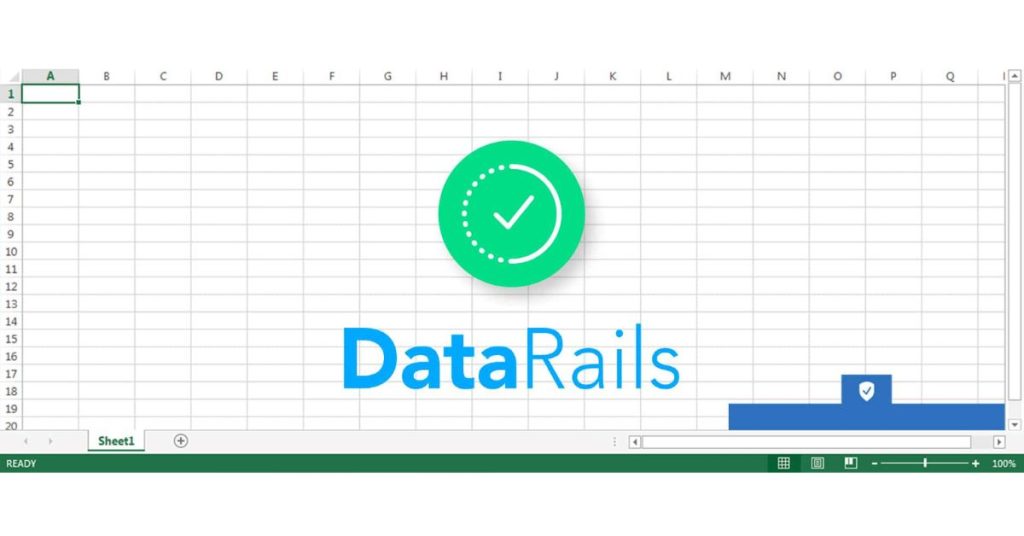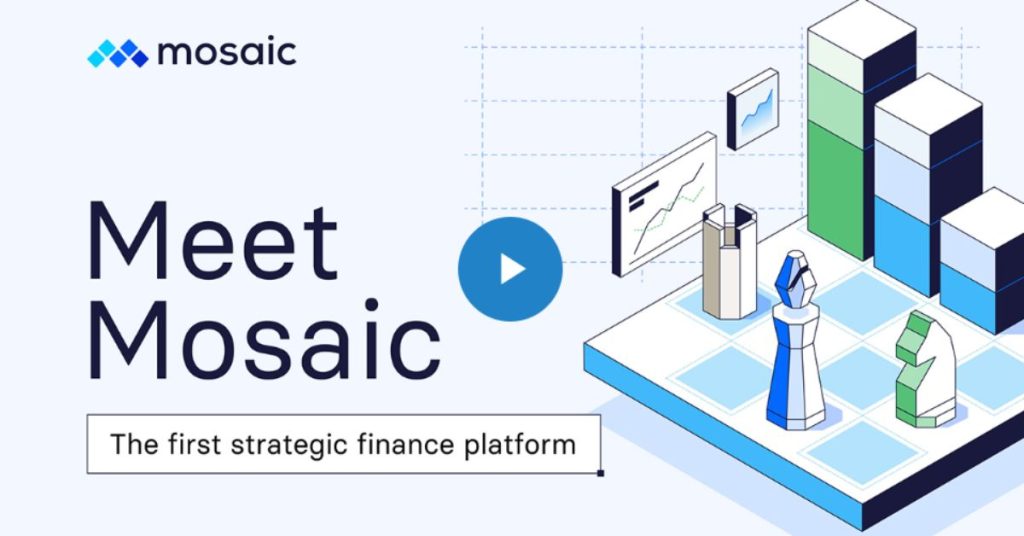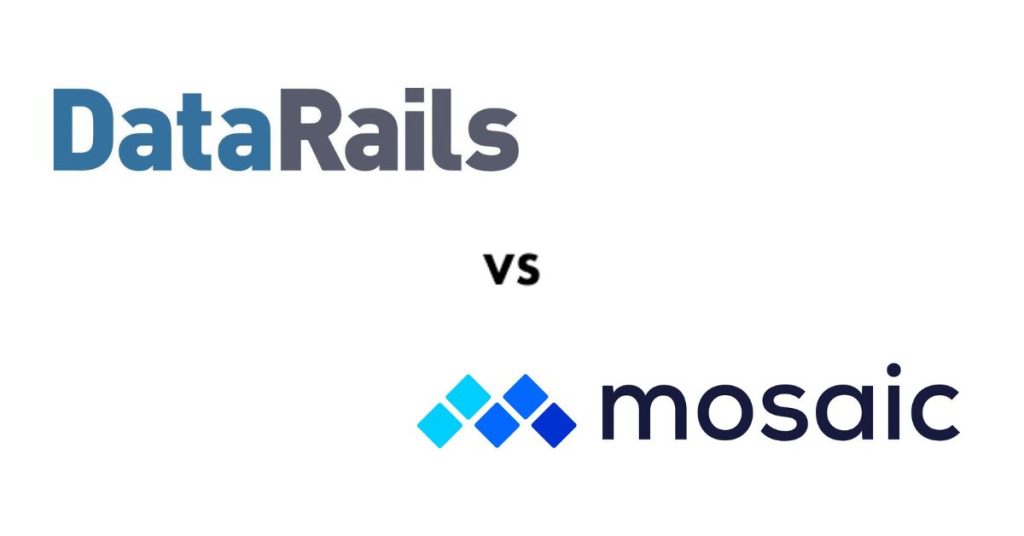Datarails and Mosaic Tech are two prominent software solutions used by FP&A professionals for financial planning and analysis. While they share similarities in their functions, there are distinct differences that set them apart.
We will provide an in-depth comparison of Datarails vs Mosaic Tech, highlighting their key features and benefits. If you’re an FP&A professional looking to optimize your financial processes, read on to find out which software might be the best fit for your needs.
A Deep Dive into Datarails and Mosaic Tech
As we break down into the specifics of Datarails and Mosaic Tech, it is crucial to understand the principles that guide these platforms and how their features intersect with the unique demands of FP&A operations.
What Is Datrails?
At its core, Datarails is an FP&A platform that stands out for its seamless integration with Excel, a familiar workhorse within most financial departments. This platform goes beyond merely automating financial reporting and planning in a snap; it amplifies the functional versatility of Excel to enhance the data integrity of spreadsheets.


Imagine the efficiency of streamlining and automating Excel tasks that are traditionally time-consuming and prone to error. By doing so, Datarails effectively pivots the focus of finance teams from data gathering to data analysis, fostering a proactive approach to financial strategy.
In addition, Datarails takes financial data management a step further. It centralizes all financial statements, providing an organized and unified database that is easily accessible for reference or review. Moreover, the platform supports the creation of automated monthly reporting packages, fostering consistency and efficiency in period-end reporting. This function is a game-changer for finance teams looking to streamline their reporting processes while enhancing the accuracy of their output.
What Is Mosaic Tech?
Turning our lens to Mosaic Tech, this platform emerges as a strategic finance solution. It is designed for agile planning, real-time reporting, and enhanced decision-making. Mosaic Tech isn’t just another finance tool. Built for today’s financial twists and turns, it offers a clear, full picture of a company’s financial landscape.


What sets Mosaic Tech apart? The ability to unify and consolidate data from across an organization. Whether it’s from your ERP, CRM, HRIS, or Billing systems, Mosaic Tech aggregates diverse data points into a single, accessible, and coherent source of truth. This powerful feature ensures finance teams have an accurate and holistic understanding of the organization’s financial health, and making an informed, strategic decisions.
While Datarails maximizes the power of Excel for financial automation and reporting, Mosaic Tech offers a broader perspective, unifying data across systems for real-time strategic finance. Both platforms have distinctive strengths, and understanding these nuances is vital as we compare their functionality in the following sections.
Dissecting the Solutions: Datarails vs Mosaic Tech
A critical component of our analysis involves unpacking the solutions offered by each platform. Here, we must consider not just the range of solutions but also how well they align with your specific FP&A requirements. The comparative advantages of Datarails and Mosaic Tech will become more apparent as we delve into it.
Mosaic Tech: A Comprehensive Suite for Strategic Finance
Mosaic Tech offers a broad spectrum of solutions designed to augment strategic financial decision-making. This platform has got you covered whether you need to:
- dissect financial data
- plan your top-line growth
- present insights to your board and investors
Consider a startup preparing for a high-stakes investor meeting. Mosaic’s Investor & Board Reporting feature would ensure all relevant financial data is not just at their fingertips but also presented in an investor-friendly format. Similarly, its Financial Modeling solution would come in handy when fielding detailed questions about future growth scenarios.
Key solutions from Mosaic Tech also include:
- Financial Analysis: Deep-dive into financial data for strategic insights.
- Top-Line Planning: Plan and project your revenue growth.
- Investor & Board Reporting: Prepare investor-ready financial reports efficiently.
- Cross-Functional Insights: Understand the financial implications across various business functions.
- Financial Modeling: Build and analyze various financial scenarios.
- Custom Metrics: Track and monitor bespoke performance indicators.
- Close & Consolidation: Seamlessly consolidate multiple subsidiaries’ data.
- Collaborative Budgeting: Enable team-wide participation in the budgeting process.
Datarails: Streamlined Solutions for Excel-Based Finance Operations
Datarails, on the other hand, focuses its solution offerings around Excel-centric finance operations. From consolidating data to analyzing complex scenarios, Datarails provides a robust suite that elevates Excel’s utility in the FP&A landscape.


Imagine a medium-sized retail company grappling with sales commissions, a notoriously tricky Excel operation. Datarails’ Sales Commission solution would streamline this process, eliminating manual errors and ensuring accurate and fair commission calculations.
In addition, take note of the following solutions from Datarails:
- Consolidation: Aggregate and manage data from various sources.
- Financial Reporting & Monthly Close: Simplify your period-end reporting process.
- Planning, Budgeting & Forecasting: Automate and enhance your financial planning process.
- FP&A Genius: Leverage AI for advanced financial analysis and forecasting.
- Analysis & Scenario Modeling: Explore and model various financial scenarios.
- Data Visualization: Convert data into visually intuitive formats for easy comprehension.
- Sales Commission: Automate and manage complex commission calculations with ease.
Who These Platforms Are For
Datarails and Mosaic Tech, while both robust and innovative solutions, cater to distinctive user groups within the finance and FP&A realm of small to medium-sized enterprises (SMEs). Understanding these user groups and their specific requirements is crucial to determining the suitability of each platform.
Datarails: Tailored for Excel-centric Finance Teams
Datarails comes into its own within finance teams in SMEs, typically ranging from 50-2000 employees, who have deeply embedded Excel usage into their operations. In such environments, the thought of leaving Excel’s familiar landscape can often trigger apprehension about the learning curve and operational disruptions that might follow. This is precisely where Datarails shines – it leverages the comfort of Excel while overlaying it with a layer of powerful automation.
For instance, consider a finance team within a mid-size manufacturing firm, consistently grappling with complex cost calculations in Excel. With Datarails, this team could automate these complex calculations, eliminating manual errors and freeing up significant time for strategic tasks, such as variance analysis or profitability optimization.
Mosaic Tech: The Go-To for FP&A Teams in High-Growth Startups and SMEs
In contrast, Mosaic Tech positions itself as a more comprehensive financial solution. It aims to serve FP&A teams in SMEs and particularly high-growth startups. It excels in its ability to facilitate cross-functional finance operations and align teams with unified financial data and insights.


Take the case of a rapidly growing SaaS startup, preparing for a significant funding round. Here, Mosaic Tech could simplify the preparation process by consolidating financial data from various systems, providing easy-to-understand insights for prospective investors, and enabling efficient prep for board meetings.
Datarails vs Mosaic Tech: A Comparative Analysis
With an understanding of who these platforms are tailored for and the solutions they offer, let’s delve deeper into a side-by-side comparison of Datarails and Mosaic Tech. Our analysis will hinge on two crucial domains: data integrity and management, and automation and efficiency.
Data Integrity and Management
For teams steeped in the Excel environment, Datarails emerges as a front-runner. Its direct integration with Excel mitigates the risk of data inconsistency, eradicating the need for unsettling platform migrations. And if you’re looking to auto-upgrade your financial reports without messing up your current groove, Datarails has your back.
On the flip side, Mosaic Tech comes if your business is juggling multiple platforms. It’s a pro at pulling data from all over—whether it’s ERP, CRM, HRIS, or billing—and giving you a clear, up-to-date financial overview. So, if your organization is dreaming of getting all your data ducks in a row under one roof, Mosaic Tech is worth a look.
Automation and Efficiency
In the realm of automation, both Datarails and Mosaic Tech have their unique strengths. Datarails automates Excel-based financial reporting and planning, liberating teams to devote more time to data interpretation and strategic decision-making.
For instance, a company grappling with intricate monthly reports. With Datarails, they can breeze through data inputs and VLOOKUPs. That means the finance team can shift focus to revenue-impacting decisions.
Mosaic Tech, on its part, brings real-time reporting, agile planning, and strategic decision-making tools to the table. Imagine a burgeoning startup prepping for a critical board meeting or a fundraising event. In that case, Mosaic Tech could expedite the process, delivering consolidated, up-to-date financial reports to stakeholders.
The Final Verdict: Datarails or Mosaic Tech?
Choosing between Datarails and Mosaic Tech ultimately depends on the specific needs of your organization. If your team heavily relies on Excel and is looking to automate manual tasks while preserving data integrity, Datarails is a superior choice. However, if your organization requires the consolidation of various data systems for real-time reporting and strategic planning, Mosaic Tech stands out.
Bear in mind, a well-equipped FP&A team is a strategic asset to any organization. Whichever platform you choose, it’s important to ensure it fits seamlessly with your existing workflows and enhances the team’s ability to provide strategic, data-driven advice. Your decision could be the difference between a financial team that merely reports numbers and a strategic partner driving your organization’s growth and profitability.

